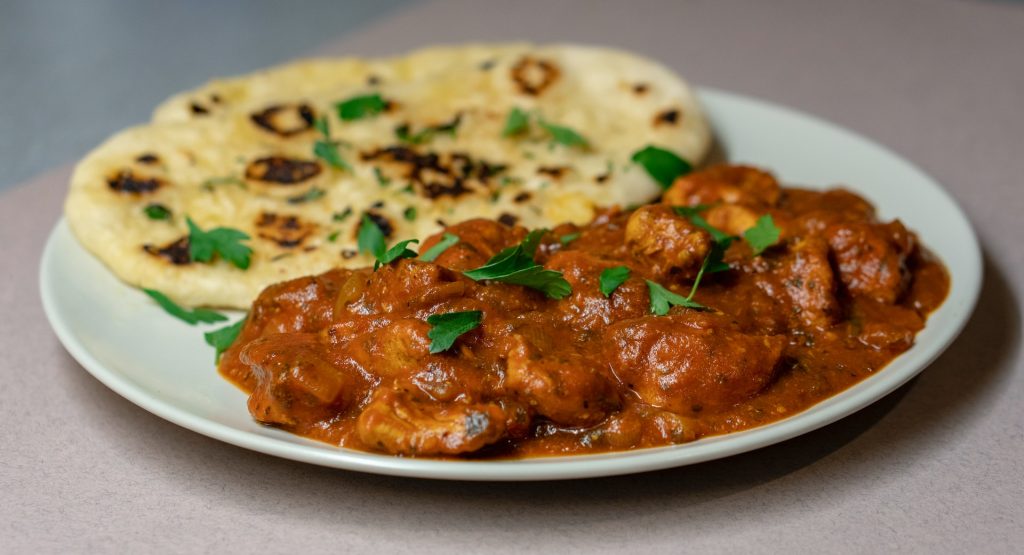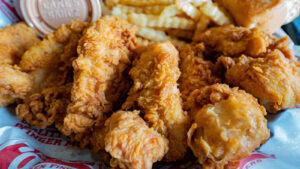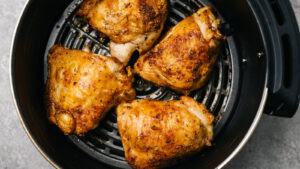Chicken Tikka Masala, often referred to as Britain’s national dish, is a beloved and iconic dish enjoyed by people around the world. This delectable fusion of tender chicken pieces marinated in yogurt and spices, cooked to perfection, and smothered in a rich tomato-based sauce has become a staple on menus in Indian restaurants worldwide. In this article, we will explore the fascinating history, the intricate preparation process, the key ingredients, and the global popularity of Chicken Tikka Masala.
The Origins of Chicken Tikka Masala
The origins of Chicken Tikka Masala are somewhat shrouded in mystery, with multiple claims to its invention. Several stories circulate about its creation, and while its exact origin remains uncertain, one thing is clear: it’s a product of cultural fusion.
Claim 1: Indian Roots
Some argue that Chicken Tikka Masala has its roots in the Indian subcontinent, particularly in the Punjab region, known for its rich culinary traditions.
One theory suggests that it emerged from traditional Indian dishes like Chicken Tikka and Butter Chicken. The story goes that, one day, a chef accidentally made Chicken Tikka too dry, leading him to create a creamy tomato-based sauce to salvage the dish.
Claim 2: British Invention
Another popular theory claims that Chicken Tikka Masala originated in Britain. It is said to have been created to cater to the British palate, which favored milder and creamier Indian dishes.
Some believe that a British chef, inspired by Indian flavors, invented the dish in Glasgow, Scotland, in the 1960s.
Regardless of its true origin, Chicken Tikka Masala has become a symbol of culinary globalization, representing the melding of diverse cuisines and tastes.
The Ingredients That Make Chicken Tikka Masala Irresistible
Chicken Tikka Masala’s appeal lies in its complex blend of spices and flavors. Here are the key ingredients that come together to create this culinary masterpiece:
Chicken:
Boneless chicken pieces, often from chicken breasts or thighs, are used for Chicken Tikka. These pieces are marinated and grilled, giving them a smoky and charred flavor.
Marinade:
The chicken is marinated in a mixture of yogurt, spices, and seasonings. Common spices used include cumin, coriander, garam masala, turmeric, paprika, and chili powder. The yogurt tenderizes the chicken and infuses it with flavor.
Sauce:
The sauce is the heart of Chicken Tikka Masala. It’s made from tomatoes, cream, and a blend of spices, including cumin, coriander, cardamom, and fenugreek. The sauce’s creamy texture and balanced flavors make it an irresistible component of the dish.
Aromatics:
Garlic, ginger, and onions are often sautéed to create a flavorful base for the sauce.
Fresh Herbs:
Chopped cilantro (coriander leaves) and occasionally fresh mint are used as garnishes, adding a burst of freshness to the dish.
The Preparation Process
Preparing Chicken Tikka Masala is a multi-step process that involves marinating, grilling, and simmering. Here’s a step-by-step guide to making this delectable dish:
Marinating the Chicken:
Cut boneless chicken pieces into bite-sized chunks.
Prepare the marinade by mixing yogurt, spices, minced garlic, and ginger.
Coat the chicken pieces with the marinade and refrigerate for at least 2-4 hours or overnight to allow the flavors to penetrate.
Grilling the Chicken:
Thread the marinated chicken pieces onto skewers.
Grill the chicken over an open flame or in a tandoor (clay oven) until they are charred and cooked through.
Remove the chicken from the skewers and set aside.
Making the Sauce:
In a separate pan, heat oil or ghee and sauté chopped onions until they turn translucent.
Add garlic and ginger, cooking until fragrant.
Stir in a blend of spices, such as cumin, coriander, and cardamom, to create a flavorful base.
Add tomato puree and cook until the sauce thickens and the oil separates.
Stir in heavy cream to create a creamy texture.
Add fenugreek leaves and season with salt and sugar to balance the flavors.
Combining Chicken and Sauce:
Add the grilled chicken pieces to the sauce and simmer until they are heated through and absorb the flavors of the sauce.
Adjust the seasoning as needed, adding more spices, cream, or tomato puree to achieve the desired taste and consistency.
Serving:
Garnish with chopped cilantro and serve hot with rice, naan bread, or roti.
Global Popularity of Chicken Tikka Masala
Chicken Tikka Masala’s popularity extends far beyond its potential origins in India and Britain. It has become a global sensation, cherished by food enthusiasts worldwide. Here are a few reasons why it has captured the hearts (and taste buds) of people from various cultures:
Versatile Flavor Profile:
Chicken Tikka Masala’s mild yet flavorful profile makes it accessible to a wide range of palates. It strikes a balance between spices, creaminess, and tanginess, making it appealing to those who may not be accustomed to spicy Indian cuisine.
Comfort Food:
The rich and creamy sauce, tender chicken, and aromatic spices make Chicken Tikka Masala a comforting and indulgent dish. It’s often sought after as a treat or comfort food.
Global Adaptations:
Chicken Tikka Masala has been adapted and localized in various regions. You can find variations that cater to specific tastes, such as vegan versions, gluten-free options, or spicier renditions.
Iconic Indian Restaurant Dish:
Many Indian restaurants around the world feature Chicken Tikka Masala prominently on their menus, ensuring its widespread availability.
Home Cooking:
Chicken Tikka Masala recipes are widely available online and in cookbooks, allowing home cooks to recreate the dish and customize it to their liking.
Chicken Tikka Masala’s journey from its mysterious origins to its status as a globally beloved dish is a testament to the power of culinary fusion and the universality of good food. Whether you savor it in a restaurant, make it at home, or enjoy a unique local version, this flavorful dish continues to bring people together through the joy of food. Its enduring popularity is a testament to the enduring appeal of a well-crafted blend of spices, creamy sauce, and tender chicken – a combination that has captured hearts and taste buds all over the world.
Variations and Regional Influences
While Chicken Tikka Masala itself is a well-loved classic, its popularity has led to numerous regional variations and adaptations. Here are some of the notable variations and influences on this iconic dish:
Paneer Tikka Masala: For those who prefer vegetarian options, paneer (Indian cottage cheese) can be substituted for chicken, resulting in a Paneer Tikka Masala. The preparation process remains largely the same, with the paneer replacing the chicken.
Vegan Tikka Masala: With the increasing demand for plant-based options, many chefs and home cooks have created vegan versions of Tikka Masala. Tofu or vegetables like cauliflower or mushrooms can be used instead of chicken, and coconut milk often replaces dairy cream to maintain the creamy texture.
Spicy Variations: In regions where spicier food is preferred, chefs may intensify the heat by using more chili powder or fresh chili peppers. This results in a spicier and more fiery version of Chicken Tikka Masala.
Regional Influences: Depending on the region, Chicken Tikka Masala may incorporate local flavors and ingredients. In the United States, for example, some restaurants offer a fusion twist by adding ingredients like bourbon or barbecue sauce.
Health-Conscious Options: As people become more health-conscious, lighter versions of Chicken Tikka Masala have emerged. These recipes may reduce the use of cream, replace it with yogurt, or use leaner cuts of chicken.
Cultural Significance
Chicken Tikka Masala holds cultural significance beyond its culinary appeal. It serves as a symbol of multiculturalism, reflecting the blending of cultures and cuisines. Here are some aspects of its cultural significance:
Global Representation: Chicken Tikka Masala is often featured in international food festivals and events, representing the diverse and inclusive nature of the culinary world.
Immigrant Communities: In many countries, particularly those with significant South Asian immigrant populations, Chicken Tikka Masala plays a role in cultural preservation and connection to heritage. It’s a dish that bridges generations and connects people to their roots.
Culinary Diplomacy: In recent years, Chicken Tikka Masala has even been used in diplomatic contexts. It has been served at official state dinners and international events as a symbol of hospitality and cultural exchange.
Pop Culture: The dish has made appearances in films, television shows, and literature, further cementing its place in pop culture. It’s often used as a reference point for exploring themes of multiculturalism and identity.
Chicken Tikka Masala is more than just a dish; it’s a testament to the power of food to transcend borders and cultures. Its origins may be disputed, but its universal appeal is undeniable. From the smoky aroma of grilled chicken to the creamy tomato-based sauce infused with spices, every bite tells a story of culinary exploration and fusion.
Whether enjoyed in an upscale Indian restaurant, a humble neighborhood eatery, or prepared with care at home, Chicken Tikka Masala has a place in the hearts of people worldwide. It represents the rich tapestry of global cuisine, where ingredients, techniques, and flavors come together to create something truly special.
So, the next time you savor a plate of Chicken Tikka Masala, take a moment to appreciate not only the delicious flavors but also the cultural connections, culinary innovations, and global unity that this iconic dish embodies. It’s a reminder that food has the extraordinary power to bring people together and celebrate the beauty of diversity.




